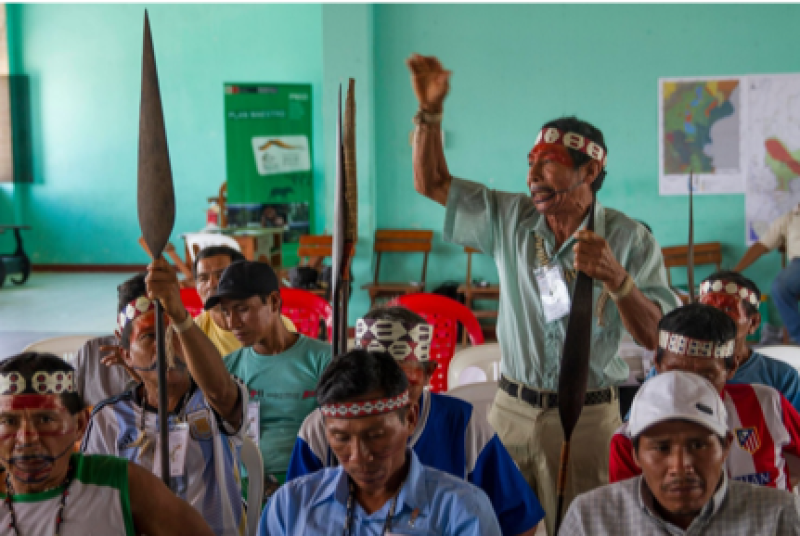From Rural to Urban Space: The indigenous Amazonian Matses Community’s Use of Spanish in Iquitos

By Graduate Student Paloma Pinillos Chavez, Department of Spanish and Portuguese

Thanks to the Migration, Mobility and Immobility Project’s support, I traveled to the Peruvian Amazon to study the language contact between Spanish and Amazonian languages. Specifically, I visited the city of Iquitos to study the Spanish spoken by the indigenous Amazonian Matses community. The main focus of this research was to analyze the differences and similarities of the Spanish spoken in the rural and urban areas by the Matses community and understand migration’s main role in linguistic and sociocultural changes.
The Matses community is originally from the Requena province, which is a fifteen-hour boat ride traveling south from Iquitos on the Amazonas and Ucayali rivers. For years, the Matses have moved back-and-forth from the Requena province to Iquitos looking for better access to education and job opportunities. This migration creates an environment of constant contact and influence between monolingual Matses speakers and bilingual speakers of Spanish and Matses. The physical movement of the Matses from rural to urban space impacts the movement of their language and dialect: Matses migration motivates the creation of new language ecologies in the urban space which leads to social change.
During my trip, I got to know and work with the Centro para el Desarrollo del Indígena Amazónico. Thanks to this center, I met Angel Uaqui Dunu Maya, a former Matses leader who helped me to recruit Matses people in Iquitos and taught me about the Matses language and culture. He explained to me how the Matses community has been changing through years — culturally and linguistically speaking — especially since young Matses have moved to Iquitos for college. One of the main problems that he highlighted as a result of this migration is the denial of Matses identity. According to Angel, the Matses youth tend towards feeling shame for speaking Matses or the Matses Spanish dialect in the urban spaces because they risk rejection and abuse from the urban people who are monolingual Spanish speakers. During the interviews I conducted with Matses young people, I had the chance to observe this behavior in some of the young interviewers. They explained how hard it is to live in a city for the first time, including both cultural and linguistic challenges. One thing that captured my attention is the awareness of this situation in the Matses youth: they are conscious of how their Spanish dialect is changing and turning closer to the one spoken in the urban space.
For example, Matses youth who live in Iquitos may avoid greeting other Matses speakers and also often decide to only speak Spanish in public. Because of these linguistic realities, there is a considerable loss of identity, culture and traditions among Matses who live in the city. Through my research of Matses speech patterns after migration to Iquitos, I identify the linguistic variations that correspond to these consequences of assimilation. With these results, we can better understand the ways that migration impacts indigenous culture, people and the new places they call home.

